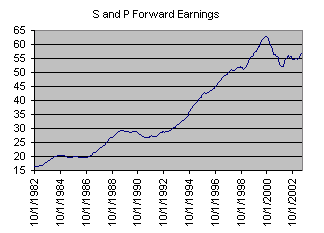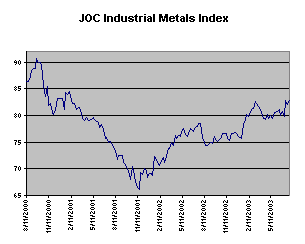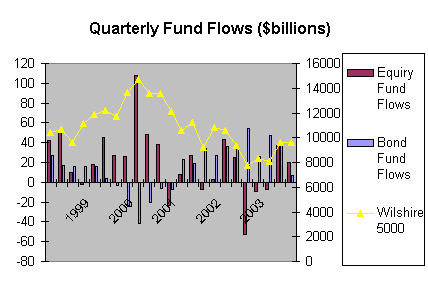What To Make Of The Market
Despite the continued improvement in the economic and corporate profit
backdrop, many market observers continue to remain pessimistic about the stock
market’s future. As such, I thought it would be useful to touch on a few points
of relevance.Â
Business sentiment, as measured by recent surveys and indexes, is in fact
showing marked signs of improvement, which is especially encouraging given the
depleted levels of inventories. Today’s surge in durable goods orders would
indicate that some of this business optimism is indeed translating into a pickup
in economic activity.
We are now deep into second quarter earnings season and the results have been
quite positive. To be certain, earnings thus far exceeded expectations by
6.2%–which, according to First Call, is typically 2.8%. Moreover, 61% of the
companies have beaten their revenue estimates. Although net top line growth has
risen by a modest amount, it is has now risen sequentially for two quarters,
suggesting that a trend is in fact developing. Â
Third Quarter earnings estimates continue to improve as a result. Upward
revisions as a percent of total monthly revisions now measure 58.87%,
which is 10% higher than the historical average. And forward earnings have been
rising sequentially for six months–as evidenced in the chart below. This is
especially important as the rise in Treasury yields has put the onus of
continuing the stock market gains on earnings. Additionally, credit spreads (the
difference between the yield of corporate bonds and risk free treasuries)
continue to narrow and are near their 52 week lows. This trend, in turn, should
keep stock valuations from becoming over-stretched.Â

Industrial metals prices are also confirming a pickup in manufacturing
activity, as can be seen in the chart below. Of significance is the fact that
the rise in base metals prices comes amid a decrease in demand from China,
which, for the past couple of years has been the largest consumer of these raw
materials. This would suggest that the rest of the world is now picking up the
slack in demand now that manufacturing activity is picking up.

Aggregate fund flow data remains supportive for equities.
For the week ended July 23, AMG data is reporting that equity
funds–including those that invest abroad–witnessed net cash inflows of $3.2 billion, which
is a jump of $2.35 billion from the prior week. Year to date, equity funds have
reported inflows totaling $50 billion–which is quite modest considering that
during the first half of the year for the past five years, equity funds have
reported average inflows of $70 billion.
Meanwhile, taxable bond funds witnessed a modest $666 million of outflows for
the week ended July 23. So far this year, investors have committed $94 billion to fixed income funds,
which is dramatically more than the amount reported during the same period in
1998 (+$44b), 1999 (+$20b) and 2000 (-$60b).
A sustained trend in outflows from bond funds into stock funds would signal
capitulation by cautious/bearish investors, which, in my view, would then
suggest that caution should be exercised by equity bulls. Until that time
however, there is still plenty of money on the sidelines–not only on the part
of retail investors but also on the part of pension and foreign investors–to
feed further gains in the S&P 500.

